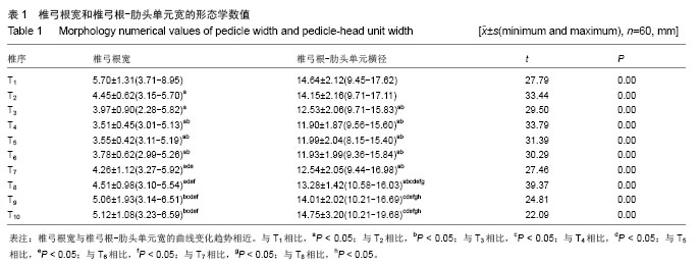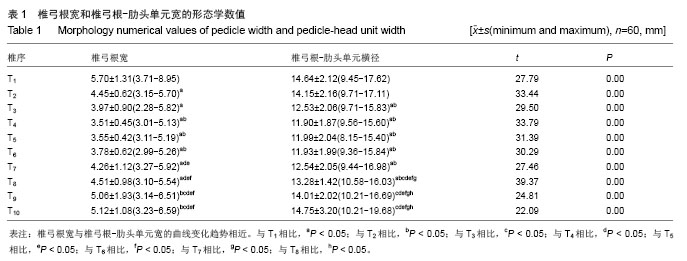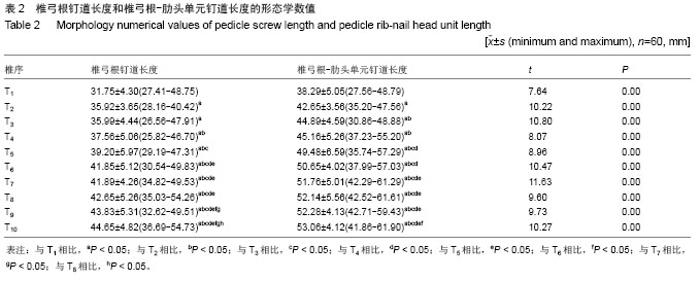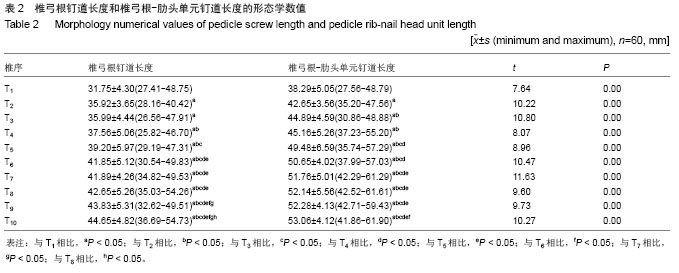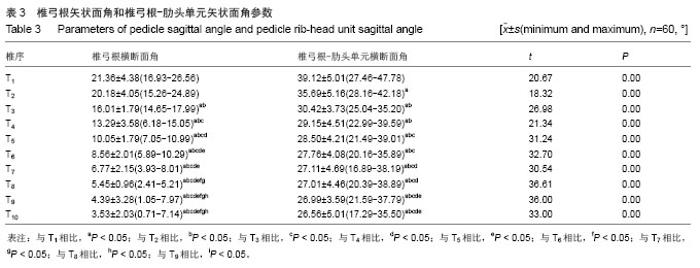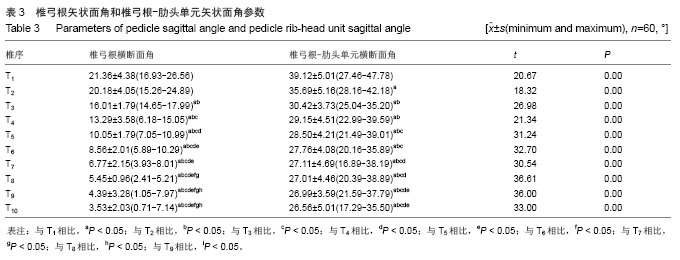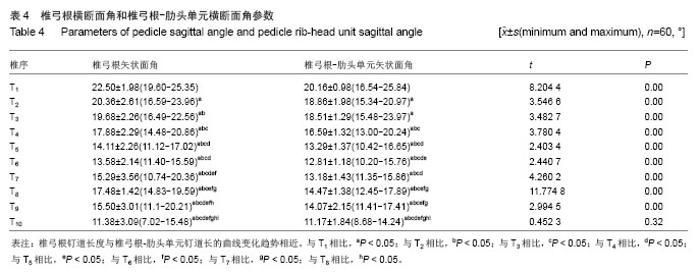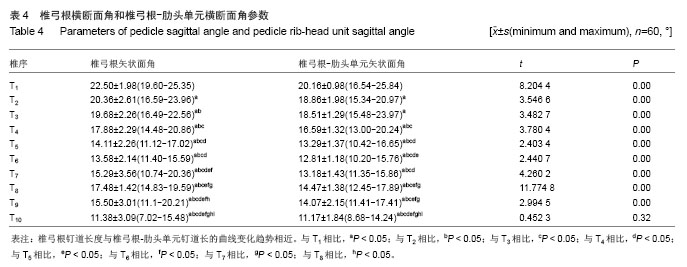| [1]Roy-Camille R, Saillant G, Mazel C. Internal fixation of the lumbar spine with pedicle screw plating. Clin Orthop Relat Res. 1986;(203):7-17.[2]Fuster S, Vega A, Barrios G, et al. Accuracy of pedicle screw insertion in the thoracolumbar spine using image-guided navigation. Neurocirugia (Astur). 2010;21(4):306-311.[3]Suk SI, Kim WJ, Kim JH, et al. Restoration of thoracic kyphosis in the hypokyphotic spine: a comparison between multiple-hook and segmental pedicle screw fixation in adolescent idiopathic scoliosis. J Spinal Disord. 1999;12(6): 489-495.[4]Smorgick Y, Millgram MA, Anekstein Y, et al. Accuracy and safety of thoracic pedicle screw placement in spinal deformities. J Spinal Disord Tech. 2005;18(6):522-526.[5]Gilbert TJ Jr, Winter RB. Pedicle anatomy in a patient with severe early-onset scoliosis: can pedicle screws be safely inserted? J Spinal Disord Tech. 2005;18(4):360-363.[6]Lei W, Wu Z. Biomechanical evaluation of an expansive pedicle screw in calf vertebrae. Eur Spine J. 2006;15(3): 321-326.[7]Husted DS, Haims AH, Fairchild TA, et al. Morphometric comparison of the pedicle rib unit to pedicles in the thoracic spine. Spine (Phila Pa 1976). 2004;29(2):139-146.[8]严军,宦坚,郑祖根,等.上中胸椎椎弓根-肋单位的CT测量及临床意义[J].中国临床解剖杂志,2007,25(6):636-639.[9]欧阳林志,钱久荣,徐厚高,等.经胸椎肋横突结合区椎弓根外螺钉固定的解剖学研究[J].中国临床解剖学杂志,2009,27(4):397-400.[10]陈坚,温干军,任绍东,等.经胸椎肋横突结合区椎弓根外螺钉固定治疗中上胸椎骨折[J].生物骨科材料与临床研究,2013,10(5): 32-34.[11]王振锋,李志军,李筱贺,等.CT三维重建青少年胸椎椎弓根断面测量的解剖学研究[J].中国临床解剖学杂志,2011,29(2): 193-197.[12]宋元进,李明,许明,等.正常人与青少年特发性脊柱侧凸患者椎弓根磁共振对比[J].解剖学杂志,2008,31(1):111-113.[13]史亚民,侯树勋,韦兴,等.青少年胸椎椎弓根影像学特征及其临床意义[J].中国矫形外科杂志,2003,11(21):1469-1472.[14]刘磊,孙琳,孙记航,等.1-6岁正常小儿胸椎椎弓根形态学研究[J].中国脊柱脊髓杂志,2013,23(8):713-717.[15]周松,朱泽章,邱勇,等.青少年特发性胸椎侧凸顶椎区椎弓根及椎管的形态学特征[J].中国脊柱脊髓杂志,2013,23(2):113-118.[16]刘瑞,张元智,李志军,等.个体化导航模板辅助儿童胸椎椎弓根螺钉置钉准确性实验研究[J].内蒙古医学院学报,2012,34(2): 99-103.[17]徐慰凯,陈芝,周敏,等.椎弓根螺钉复位内固定、椎间植骨融合治疗腰椎滑脱症[J].临床骨科杂志,2008,11(3):263-264.[18]Wu H, Gao ZL, Wang JC, et al. Pedicle screw placement in the thoracic spine: a randomized comparison study of computer-assisted navigation and conventional techniques. Chin J Traumatol. 2010;13(4):201-205.[19]李全义,宋斌,强辉,等.AF椎弓根固定技术治疗骨质疏松伴胸腰椎骨折脱位疗效分析[J].临床骨科杂志,2007,10(3):232-234.[20]陶忠亮,李军,张财义,等.后路椎管减压及选择性椎弓根螺钉内固定治疗胸椎黄韧带骨化症[J].中国矫形外科杂志,2012,20(1): 86-87.[21]宋成,海涌.青少年脊柱侧凸椎弓根进钉点的选择[J].中国矫形外科杂志,2006,14(11):3.[22]Gilbert TJ Jr, Winter RB. Pedicle anatomy in a patient with severe early-onset scoliosis: can pedicle screws be safely inserted? J Spinal Disord Tech. 2005;18(4):360-363.[23]韦兴,侯树勋,史亚民,等.胸椎经“椎弓根-肋骨间”螺钉与椎弓根螺钉固定的抗拔出力比较[J].中国脊柱脊髓杂志,2006,16(8): 623-625.[24]Lou E, Hill DL, Raso JV, et al. Instrumented rod rotator system for spinal surgery. Med Biol Eng Comput. 2002;40(4): 376-379.[25]Suk SI, Kim WJ, Lee SM, et al. Thoracic pedicle screw fixation in spinal deformities: are they really safe? Spine (Phila Pa 1976). 2001;26(18):2049-2057.[26]Yüksel KZ, Adams MS, Chamberlain RH, et al. Pullout resistance of thoracic extrapedicular screws used as a salvage procedure. Spine J. 2007;7(3):286-291. [27]施新革,张永刚,张雪松,等.术中 CT 导航在脊柱侧凸后路胸椎椎弓根螺钉植入术中的应用[J].中国修复重建外科杂志,2012, 26(12):1415-1419.[28]Husted DS, Yue JJ, Fairchild TA, et al. An extrapedicular approach to the placement of screws in the thoracic spine: an anatomic and radiographic assessment. Spine (Phila Pa 1976). 2003;28(20):2324-2330.[29]邢文华,贾连顺,霍洪军,等.胸椎椎弓根-肋骨复合体螺钉置入内固定的应用解剖学特征[J].中国组织工程研究与临床康复, 2011,15(43):8063-8067.[30]付长峰,刘中国,刘一,等.成人胸椎椎弓根横径对螺钉植入安全性的影响[J].吉林大学学报(医学版),2009,35(2):19-20.[31]李志军,温树正,汪剑威,等.椎弓根骨质的CT断面测量及其临床意义[J].中国临床解剖学杂志,2003,21(1):37-40.[32]谢陶敢,陈其昕,李方才,等.胸椎椎弓根-肋骨单元与椎弓根的CT测量[J].中国脊柱脊髓杂志,2003,21(1):665-668.[33]贺聚良.上胸椎前路逆向椎弓根及逆向椎弓根—肋骨复合体镙钉技术的可行性研究[D].南宁:广西医科大学.2013.[34]杨鹏.数字化人体胸椎椎弓根-肋骨单元模型建立及生物力学研究[J].疾病监测与控制,2012,6(4):214-215. |
